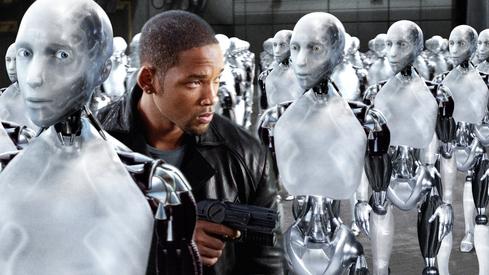Google Barge Showroom ScrappedGoogle Barge Showroom Scrapped
Google abandons its plans for a floating technology exhibit hall, at least on the East Coast.


10 Ways Google Must Improve Android
10 Ways Google Must Improve Android (Click image for larger view and slideshow.)
A barge that Google intended as "an interactive space where people can learn about new technology" will become a lesson in recycling.
Google confirms that it has sold a barge it had moored at the port of Portland, Maine. The buyer, marine services firm Cashman Equipment Corp., did not immediately respond to a request for comment.
As for the structure atop the barge, it will be scrapped, according to a report in the Portland Press Herald.
The Portland barge is one of two known Google barges spotted last year on opposite coasts. Last October, a barge carrying a large structure was seen at San Francisco's Treasure Island and linked to Google. Initially, it was thought the two barges were floating data centers. But subsequent investigation revealed architectural design documents describing plans for a waterfront cultural exhibition center referred to as "The By and Large Studio."
[Streaming music is about to get even more competitive. Read Google, Apple & The Battle For Your Ears.]
An information packet assembled by Google-affiliated By and Large LLC describes the project thusly: "The artistic structure combines innovative architecture with a bit of nautical whimsy -- creating a surprising environment that inspires conversation, community and 'aha' moments."
But like so many electronic devices, Google's box of whimsy -- at least the Portland one -- will be sold for scrap. It's an ignominious end for a tantalizing technology showcase and an amateurish attempt to outshine Apple's elegant retail stores.
It might also foreshadow the fate of Google Glass, which has struggled for acceptance, received no keynote attention at the company's June developer conference, and in July saw project founder Babak Parviz depart Google for a position at rival Amazon.com. Parviz also ran Google's smart contact lens project.
Glass needs a showroom where people can try the devices on and experience the technology for themselves. When initially distributing Glass to developers, Google invited buyers to just such a showroom at its Mountain View, Calif., headquarters.
The foundering of the Maine barge-borne exhibition space raises doubts about Google's commitment to Glass and to its expected push to open retail stores. Even so, Google's evident interest in Android Wear devices and the growing popularity of Chromebooks suggest that the company still has some reason to establish a retail footprint.
Meanwhile Google's West Coast barge has been moved to the Port of Stockton because Google failed to secure the necessary permits for San Francisco Bay. Stockton lies outside the jurisdiction of the San Francisco Bay Conservation and Development Commission, so Google's barge can remain there without permit issues. Stockton port director Richard Aschieris said in a phone interview that Google had initially agreed to keep its barge at the port for six months and that at the end of the summer, the mooring arrangement converts to month-to-month.
"It's here and it's right where it was originally berthed," Aschieris said, adding that Google has not communicated any plans for the barge or the showroom on top.
IT must support employees on the go as well as build mobile apps for customers. Both initiatives still have a long way to go. Get the new Frictionless IT: Mobility issue of information Tech Digest today (free registration required).
About the Author
You May Also Like






